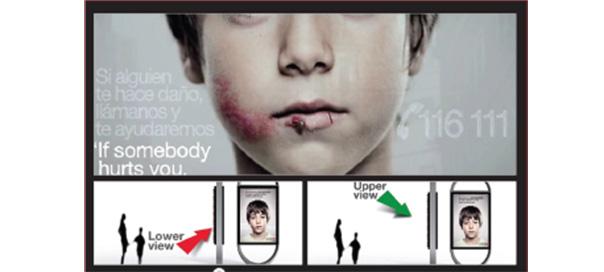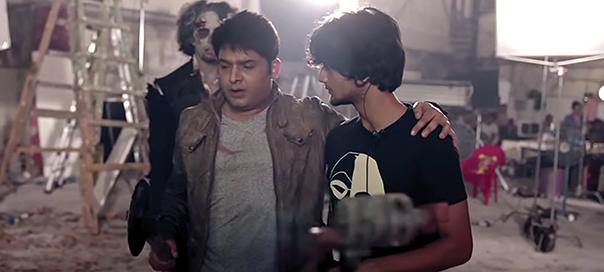By Malay Desai
From: Spain, by Grey
Fundación ANAR, a Madrid-based organisation that stands for ‘Aid to Children and Adolescents at Risk’ created a bus-stop advertisement in April. Using lenticular printing, the company made the ad so that an altered version of it could be visible from a child’s height – and it bears a helpline number. For anyone taller than four feet five inches, i.e. an average adult, the ad would show a picture of the same boy but unbruised, with the message ‘Sometimes, child abuse is only visible to the child suffering it.’ The copy that was only visible from a lower angle read ‘If somebody hurts you, phone us and we’ll help you.’
Just when we were wondering how long it’s been since we last hit upon an outstanding outdoor ad (four months after Windows 8’s superb campaign), we’re hit by this one right in mainstream news itself. It’s the millionth advertisement aimed at children, but perhaps the first in history of outdoors to be ‘visible’ only to them.
Well-meaning helplines and non-profits across the world strive to find ways to talk to child abuse victims and get them to act, without the prying adult’s knowledge. At the heart of this ad isn’t any glitzy technology, just the good ol’ ‘lenticular printing’ – that art of imposing two images on one canvas, visible differently from different angles. It’s been around since the ’40s!
The premise is simple, catch the child at a public transport location and make the ‘adult-proof’ message carry simple copy and the helpline number. The usage of lenticular technology is sheer ingenuity, for it’s been hitherto associated only with blah ‘product in motion’ ads. Also, it seems like just a single advertisement but thanks to fruitful PR, its concept has gained unprecedented coverage, importantly also of the helpline number.
That said, creating awareness and news is one thing, effectively increasing number of calls to the helpline is another. We’d like to believe that more of such ads through towns where child abuse cases are high would make a difference; and only that would justify the awards which this ad is likely to win. Also, if the system addressing these cases is toothless, the dexterity of this ad would be pointless.
Back home, Child Line 1098 has been a phenomenal project that has tackled thousands of cases since 1996. It has taken to outdoors and print in regional publications to drive its messaging, besides animation to educate erring teachers and parents. But given the unfortunate numbers of crimes on minors here, it could do with a striking campaign or two.
Coming back to lenticular printing, how about using this concept for ‘adult only’ advertisements?
























